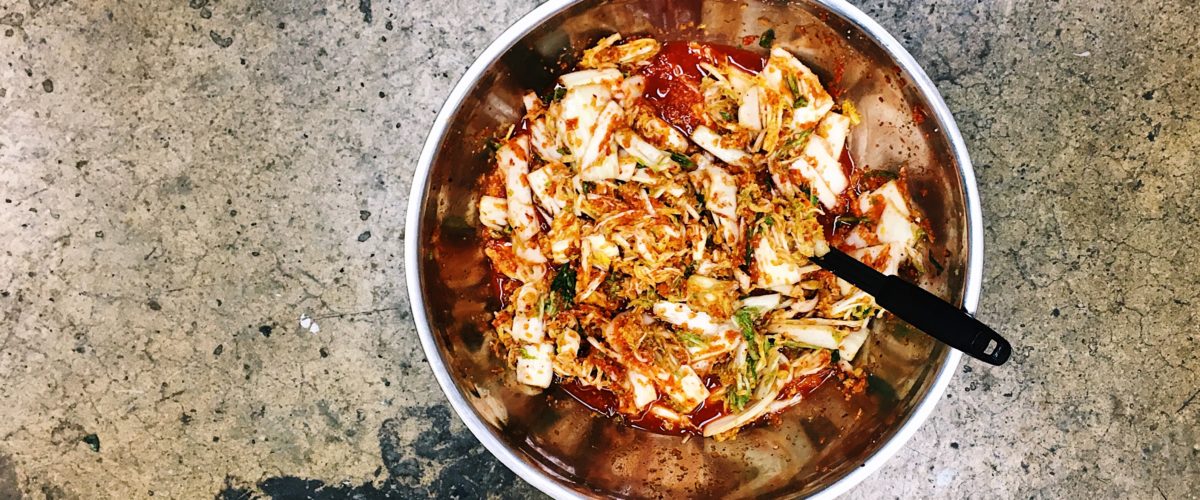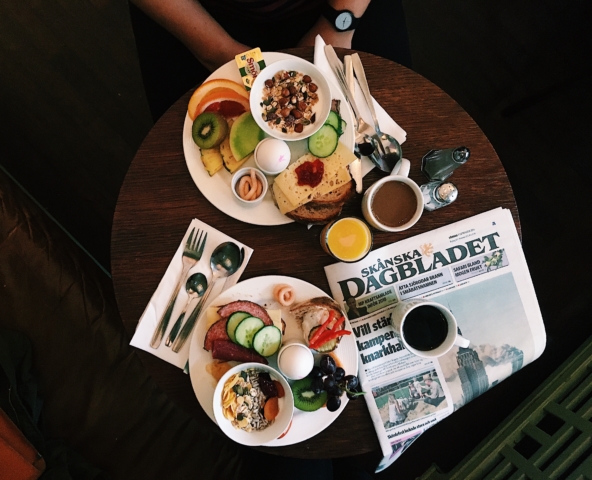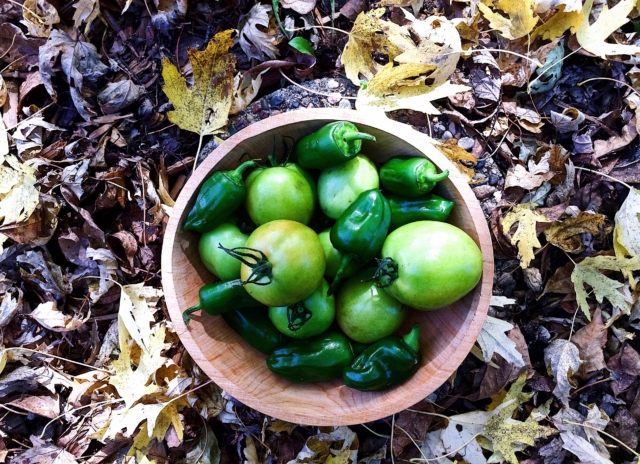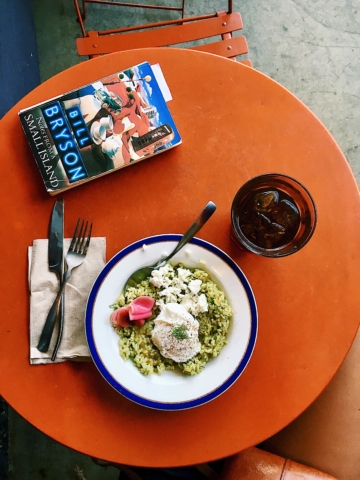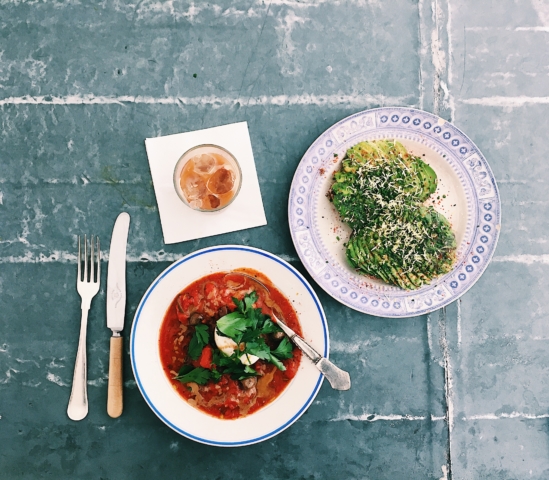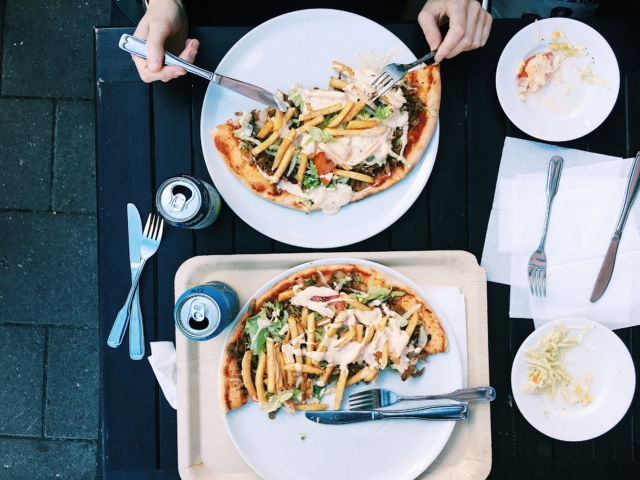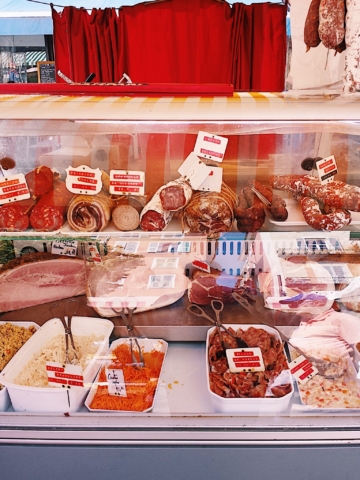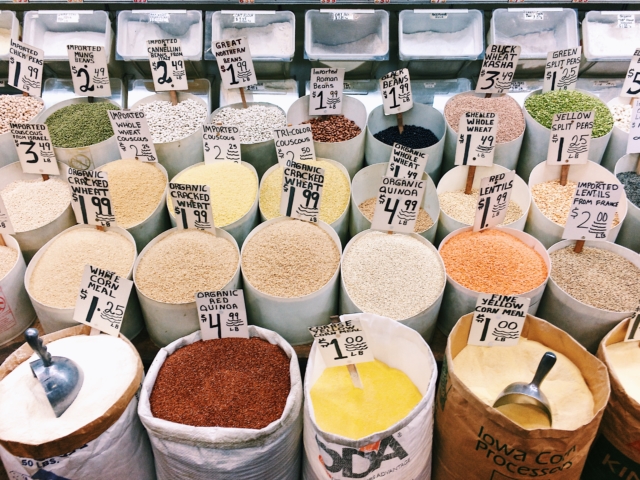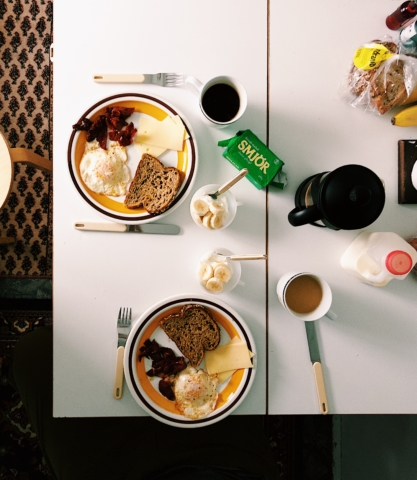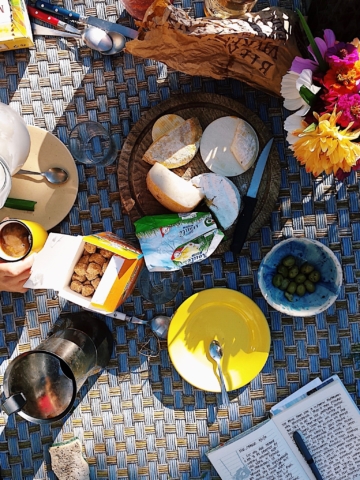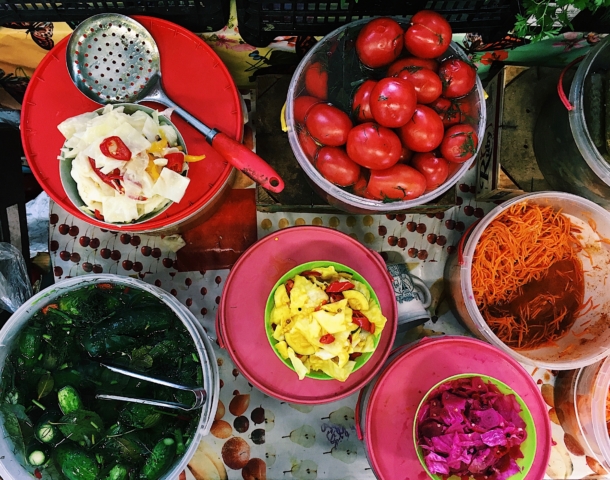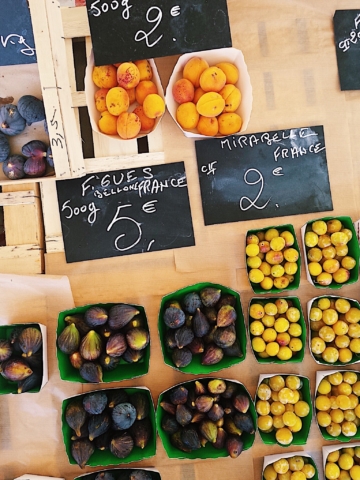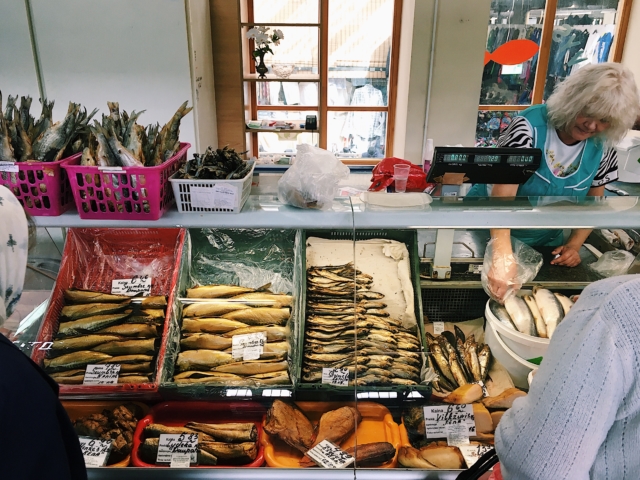Before this year, I never knew much about fermentation. I liked sauerkraut on sausages and enjoyed the crispiness of pickles, but the idea of fermenting never seemed quite within my grasp – the whole concept seeming a bit magical and overly scientific. But now, as I try to be more aware of the rural opportunities around me, I’ve made an active decision to connect with the vegetables filling our kitchen. Fermentation has become a challenge, a creative outlet, and a way of adding flavor complexity to the food I cook.
I began embracing fermentation this past spring. My first fermenting experience was making preserved lemons to supplement the Moroccan tagines and shakshukas filling our kitchen. But preserving lemons is a rather simple endeavor: combine salt, spices, and lemons and let sit for three weeks. The result is a jar of salty, soft lemon rinds that add zest to any dish. Preserved lemons were my warm-up, a way of dipping my toes in the water before plunging in headfirst.
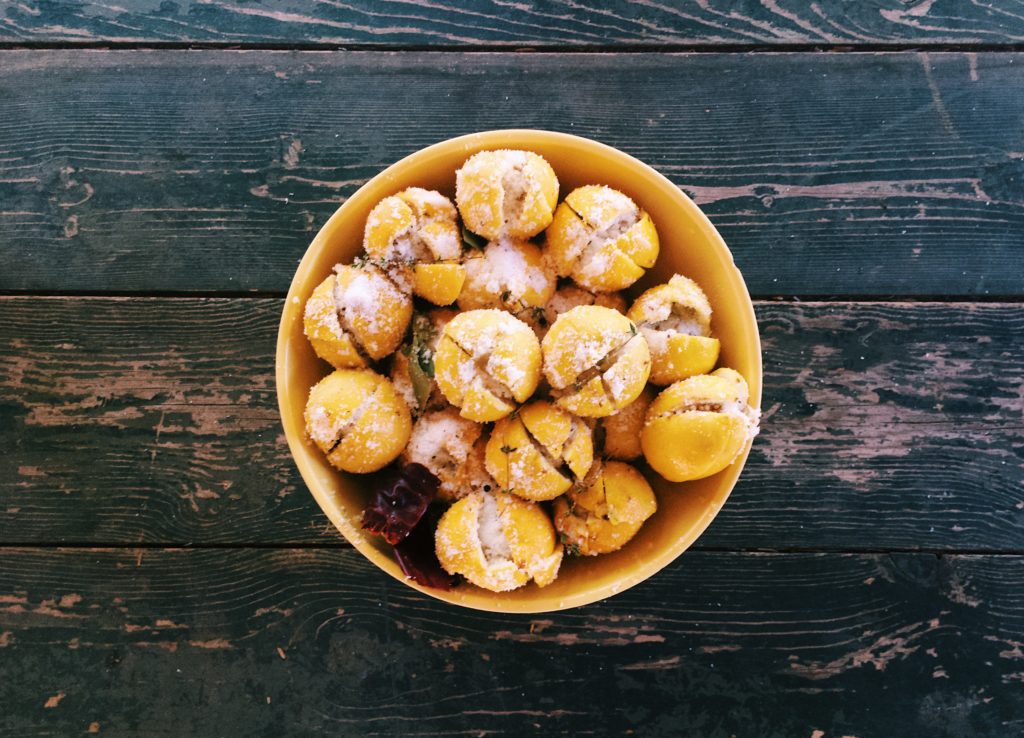 I’d always loved kimchee but never attempted it myself. On the day I first considered making it, the local grocer happened to have fresh Napa cabbage. It was a sign. I grabbed the green and white oblong vegetable and got to work. Following a recipe out of Travis Lett’s cookbook, Gjelina, I set off into new culinary territory. Calling for guajillo chiles, which I’ve used before, to make a paste instead of Korean chiles, the recipe seemed doable and unintimidating. I arranged the ingredients, proceeded cautiously, and created a rookie batch of kimchee with little trouble. Then came the tricky part, the part that made me slightly uneasy – the fermentation.
I’d always loved kimchee but never attempted it myself. On the day I first considered making it, the local grocer happened to have fresh Napa cabbage. It was a sign. I grabbed the green and white oblong vegetable and got to work. Following a recipe out of Travis Lett’s cookbook, Gjelina, I set off into new culinary territory. Calling for guajillo chiles, which I’ve used before, to make a paste instead of Korean chiles, the recipe seemed doable and unintimidating. I arranged the ingredients, proceeded cautiously, and created a rookie batch of kimchee with little trouble. Then came the tricky part, the part that made me slightly uneasy – the fermentation.
Cover and let stand at room temperature for two to four weeks. You will see small bubbles form in the mixture. [Gjelina]
Bubbles! Never before had I encountered a recipe that required and encouraged bubbles. When you’re a bit unsure about a recent mixture of cabbage, salt, fish sauce, garlic, onion, chiles, ginger, and white wine vinegar, the last thing you want to do is let it sit out at room temperature for two to four weeks while keeping your eyes peeled for bubbles. But, I followed the words above and waited. With extreme patience and mild negligence, I waited. And waited. At week three when there were still no bubbles, I waited a few days more. Eventually, at the very end of week four, I spotted bubbles and tested the kimchee. And to the surprise of myself and the good people willing to test my concoction, it tasted delicious.
Thus began my zealous advocacy for both Gjelina and homemade kimchee. Since then, I’ve made many batches. Some made for our home kitchen, others to give as gifts, even one big batch as part of a community dinner for the Milan Listening House. And each time I make this style of kimchee, I learn something new. I see the process a bit differently. There’s room to tweak the measurements and test the fermentation time. I like to think that the recipe is more of a guideline, keeping the end goal clear but allowing space for embellishment and experimentation along the way.
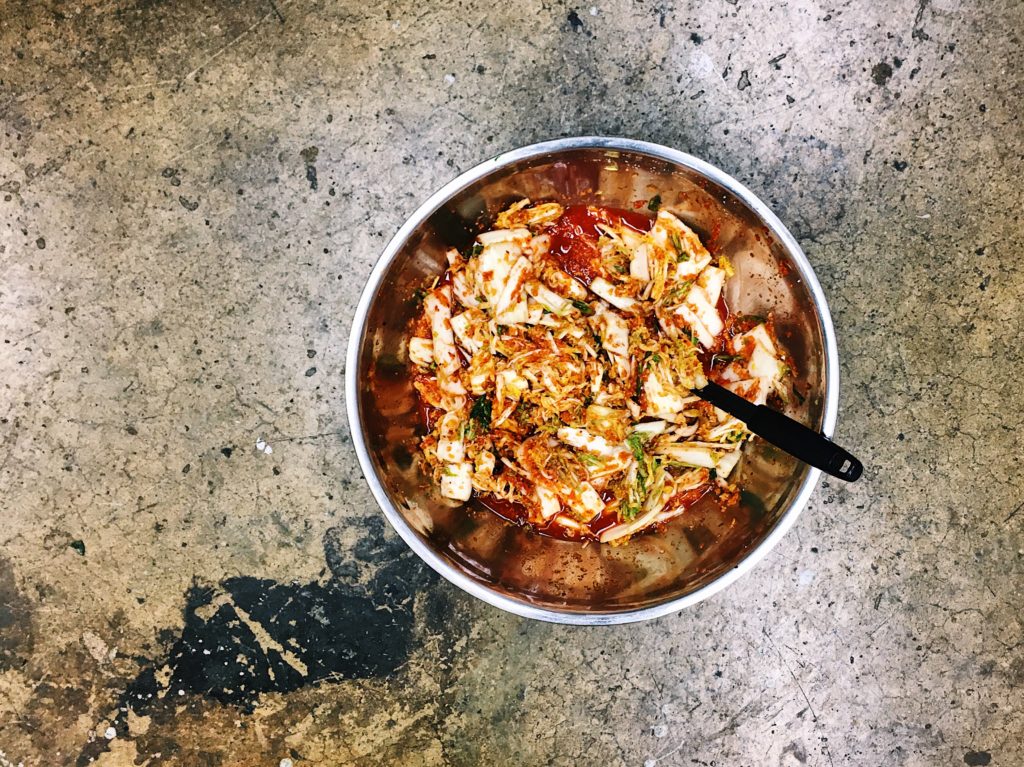 After making kimchee, the world of fermentation beckoned me further. Late April brought the next opportunity. The fresh asparagus was growing wild at our farm. Each day I trekked around our grove pulling asparagus, eager to try new recipes with this fresh harbinger of spring. My maiden voyage into asparagus pickles was mediocre. The asparagus spears ended up just a little too soggy and the tang a bit too strong. There wasn’t much time for disappointment to set in, as the asparagus was growing – and growing at a rapid pace. Seven inches a day at peak, I’d found out. There were many more mixtures to try and armfuls more to pick.
After making kimchee, the world of fermentation beckoned me further. Late April brought the next opportunity. The fresh asparagus was growing wild at our farm. Each day I trekked around our grove pulling asparagus, eager to try new recipes with this fresh harbinger of spring. My maiden voyage into asparagus pickles was mediocre. The asparagus spears ended up just a little too soggy and the tang a bit too strong. There wasn’t much time for disappointment to set in, as the asparagus was growing – and growing at a rapid pace. Seven inches a day at peak, I’d found out. There were many more mixtures to try and armfuls more to pick.
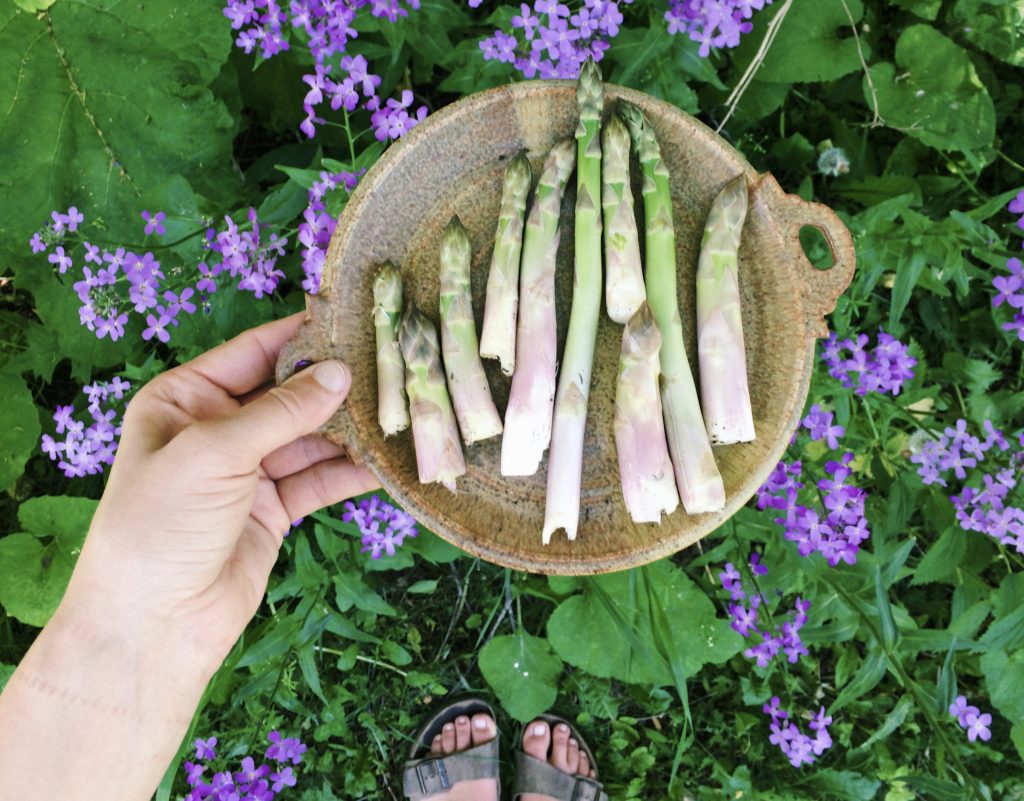 For my thirtieth birthday in May, I received a few books to spur my food exploration further. One cookbook, Burma Superstar, prompted my appreciation for the savory blend of Asian cooking found in Myanmar. I received Fermented Vegetables by Kirsten and Christopher Shockey, my new go-to, an approachable guide to fermentation practices and recipes for lacto-fermenting vegetables with salt. The Art of Fermentation by Sandor Katz is a classic and true masterpiece with an in-depth look at the global history, process, and concepts of fermentation. Sandor Katz and Michael Pollan, who wrote the introduction to The Art of Fermentation, are well versed in the world of fermenting and share significant arguments in praise of embracing fermentation. I recommend all three of these books to anyone looking for an expanded culinary influence.
For my thirtieth birthday in May, I received a few books to spur my food exploration further. One cookbook, Burma Superstar, prompted my appreciation for the savory blend of Asian cooking found in Myanmar. I received Fermented Vegetables by Kirsten and Christopher Shockey, my new go-to, an approachable guide to fermentation practices and recipes for lacto-fermenting vegetables with salt. The Art of Fermentation by Sandor Katz is a classic and true masterpiece with an in-depth look at the global history, process, and concepts of fermentation. Sandor Katz and Michael Pollan, who wrote the introduction to The Art of Fermentation, are well versed in the world of fermenting and share significant arguments in praise of embracing fermentation. I recommend all three of these books to anyone looking for an expanded culinary influence.
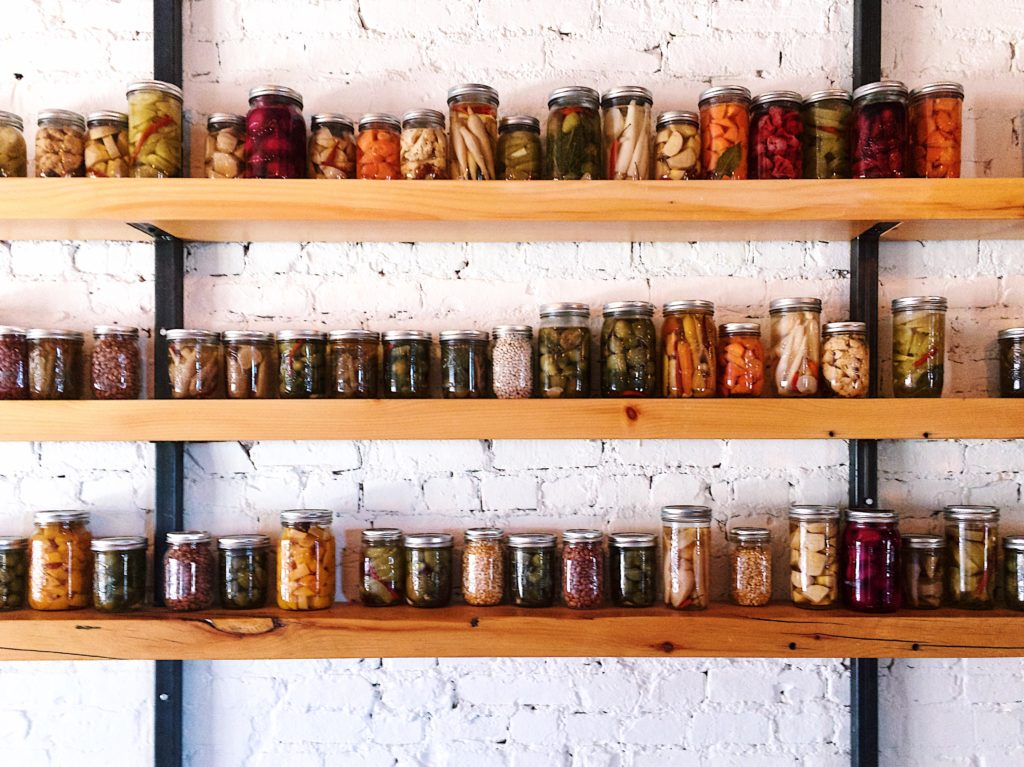
I’ve taken these words as a call to action, encouraging me onward in my fermentation practice. I even designed and created specialized ceramic fermentation crocks complete with a water-sealing moat and weights for holding the vegetables safely under the brine. I intended to sell a couple of them on my Etsy Shop but have instead used them non-stop for new batches.
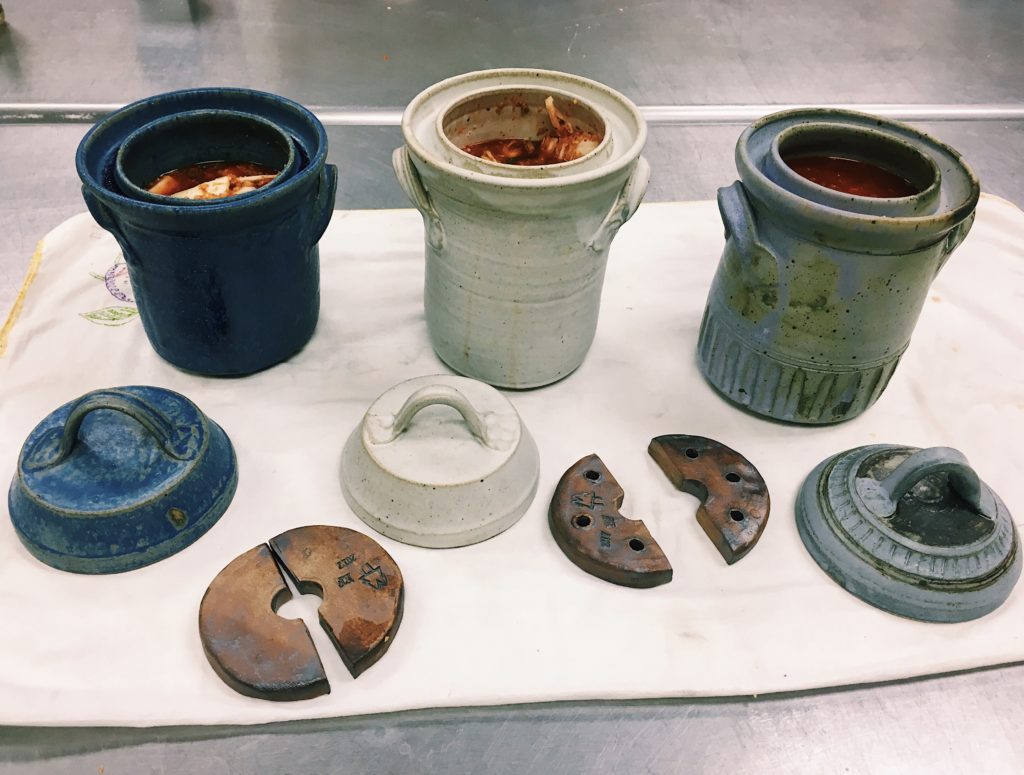 This past week brought curried cauliflower, red cabbage and caraway sauerkraut, crème fraiche, carrot and beet kraut, and lacto-fermented rosemary and lemon carrots to the collection. Soon I’ll add pickled beets and green tomato relish from my garden, julienned parsnip sticks in brine, and fermented leeks with horseradish to the crocks.
This past week brought curried cauliflower, red cabbage and caraway sauerkraut, crème fraiche, carrot and beet kraut, and lacto-fermented rosemary and lemon carrots to the collection. Soon I’ll add pickled beets and green tomato relish from my garden, julienned parsnip sticks in brine, and fermented leeks with horseradish to the crocks.
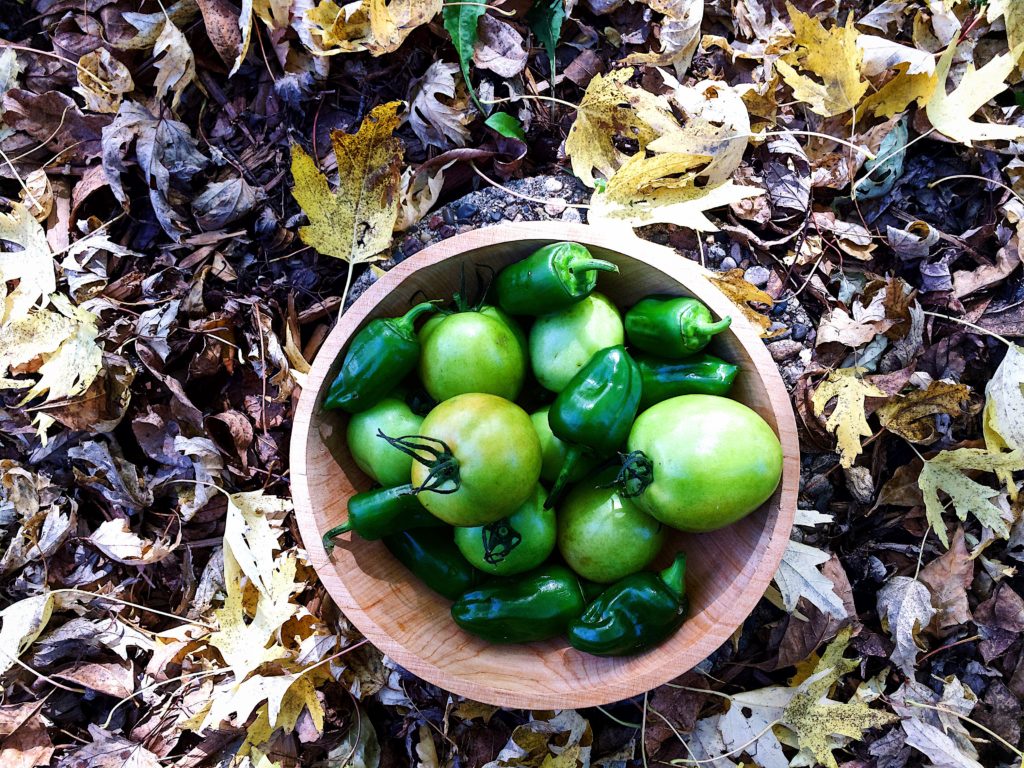 I am thankful for the bounty of fresh vegetables around me. My small garden produced a substantial yield in its first year. In addition, I benefited from farmers who sell their produce at markets and neighbors who share their CSA boxes. Preserving fresh vegetables at their peak season holds the deep notes of flavor and color even as late autumn sets in. It also creates a way to feel connected to the land, the seasons, and the natural world around me. It’s easy to forget how much of our food comes from mass industry outside our region. We don’t always realize how much money is spent on transportation. Often it’s frozen, dried, or filled with sugars and preservatives to extend shelf life. Fermenting reminds me of my tangible connection to food and the role I play as an active participant in the food scene around me.
I am thankful for the bounty of fresh vegetables around me. My small garden produced a substantial yield in its first year. In addition, I benefited from farmers who sell their produce at markets and neighbors who share their CSA boxes. Preserving fresh vegetables at their peak season holds the deep notes of flavor and color even as late autumn sets in. It also creates a way to feel connected to the land, the seasons, and the natural world around me. It’s easy to forget how much of our food comes from mass industry outside our region. We don’t always realize how much money is spent on transportation. Often it’s frozen, dried, or filled with sugars and preservatives to extend shelf life. Fermenting reminds me of my tangible connection to food and the role I play as an active participant in the food scene around me.
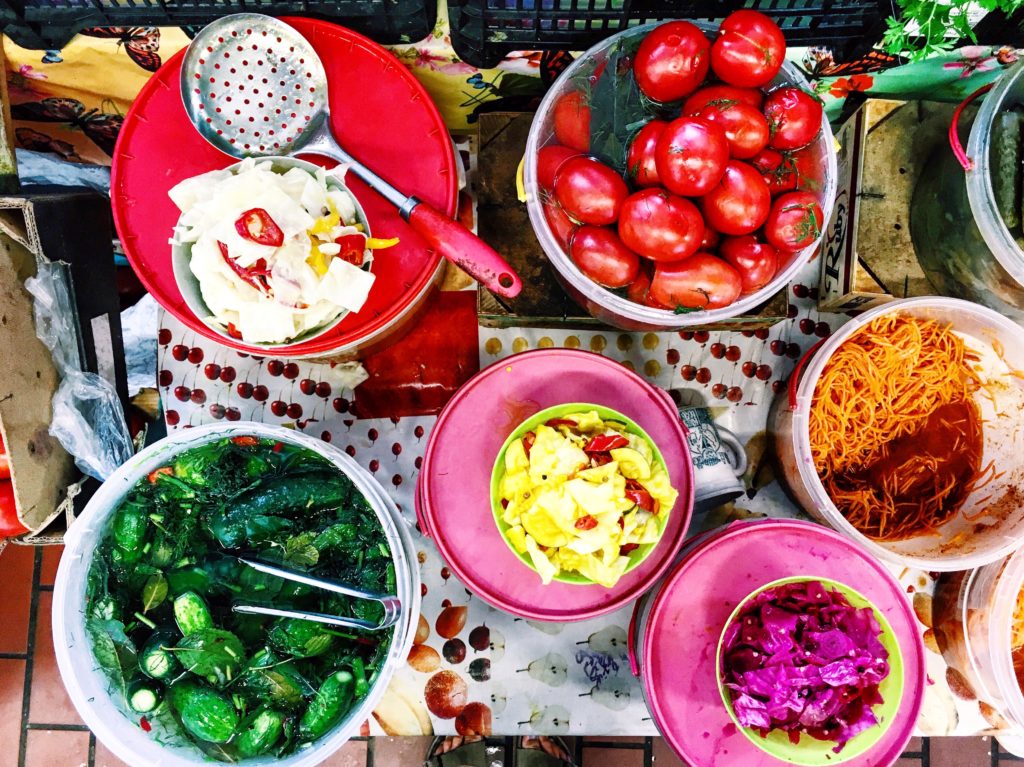
As tomato confit simmers away in the oven, preserving this week’s excess garden tomatoes, the warm aromas of garlic and thyme float through the kitchen. The kitchen is my workplace. It’s where I find peace. The late afternoon sun shines in the window, the occasional wasp breezes by outside, and my foot taps to Gillian Welch singing in the background.
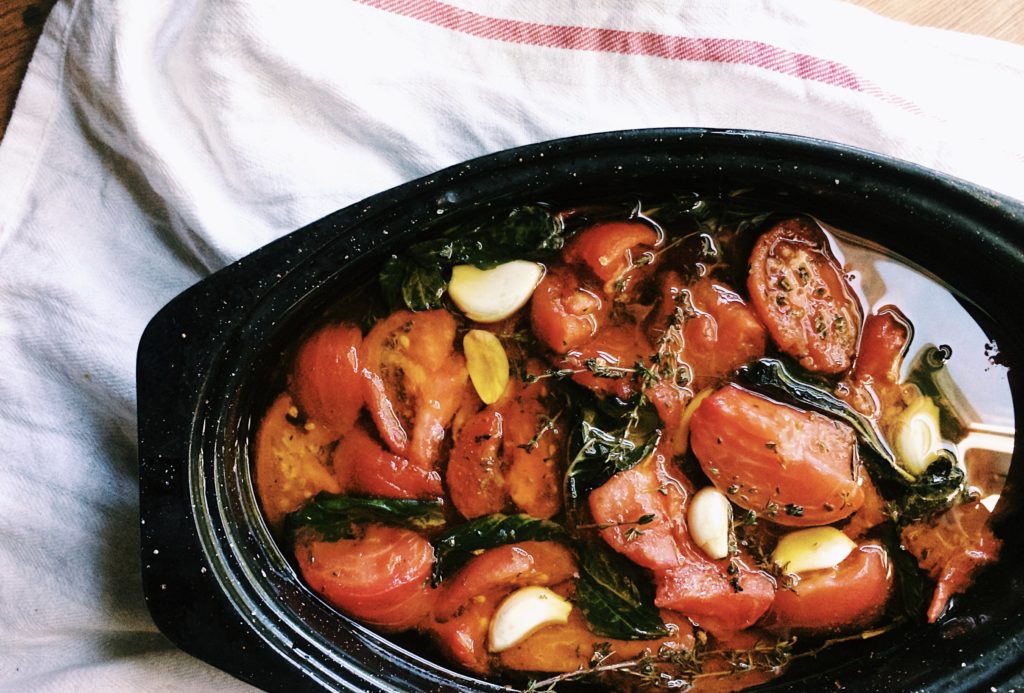 This season’s food experience has changed the way I eat and the way I live. Now that I have a garden and better access to farms, I find new value in the preservation of fresh produce. I will continue fermenting, or as Michael Pollan says, “lodging my eloquent protest” against the homogenization of food and flavor. As I do so, I will remember my connection to what I eat. Little by little I’ll make an impact. I’ll take on opportunities for participatory action. I’ll work to eliminate food waste by imaginative food preservation. And above all else, I will seize the chance to participate in local culture by savoring seasonal produce.
This season’s food experience has changed the way I eat and the way I live. Now that I have a garden and better access to farms, I find new value in the preservation of fresh produce. I will continue fermenting, or as Michael Pollan says, “lodging my eloquent protest” against the homogenization of food and flavor. As I do so, I will remember my connection to what I eat. Little by little I’ll make an impact. I’ll take on opportunities for participatory action. I’ll work to eliminate food waste by imaginative food preservation. And above all else, I will seize the chance to participate in local culture by savoring seasonal produce.
Grab some vegetables and join me. Your taste buds, pantry shelves, and dinner companions will be immensely grateful.
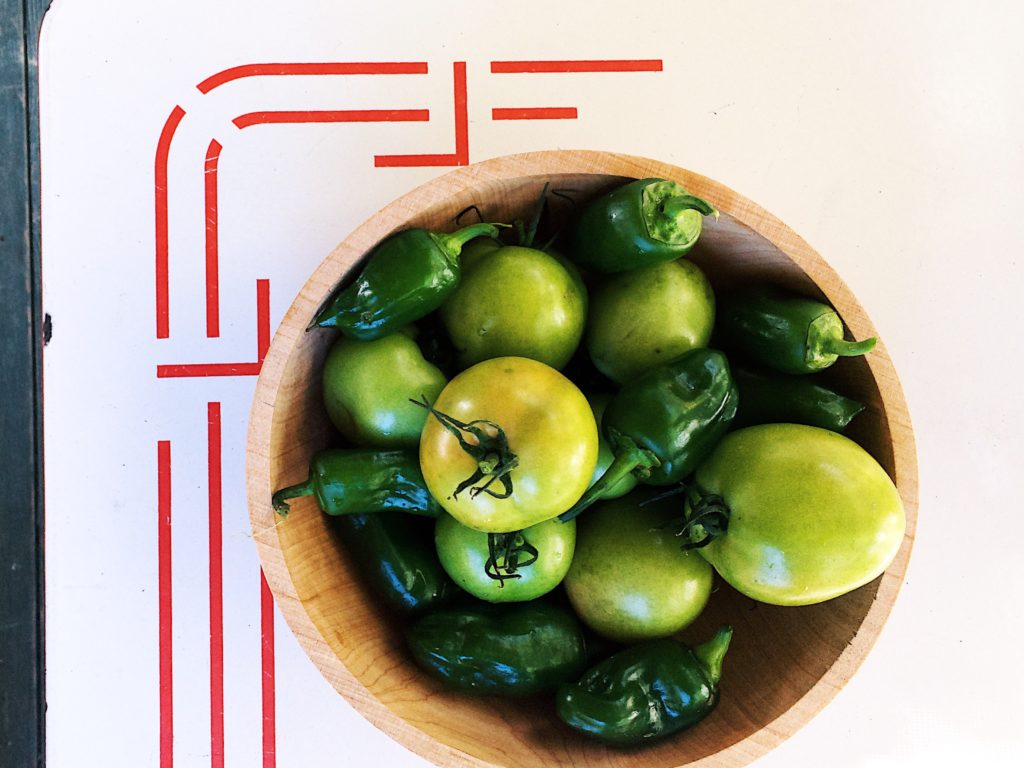
Photo notes:
-Wall of preserved vegetable shelves: Gold, Cash, Gold in Detroit, MI
-Table of fermented vegetables: Street market in Vilnius, Lithuania

Elisabeth A. Fondell is a writer, potter, and food enthusiast living in the rural Midwest. She is currently working on Food Stories From Houston County, a project documenting stories of culinary resilience in Minnesota’s southeastern-most county through the Crystal Creek Citizen-Artist Residency.
Elisabeth began focusing on place-based food writing after receiving a grant from the Southwest Minnesota Arts Council to create a body of work celebrating the intersection of food and culture. See that exhibit here.

